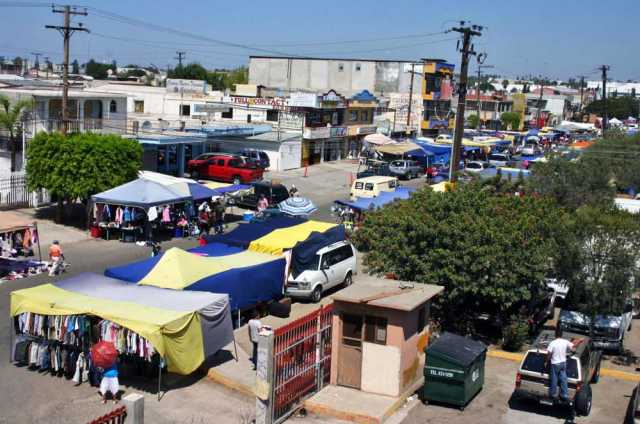by Geovanni Zamudio
In Tijuana, Mexico, like in other border towns, a combination of different social and economic factors has created a set of conditions that encouraged the formation of a complex system of informal street markets commonly known as mercados sobreruedas. This term can be translated as “on wheels markets”, revealing a key aspect of the markets: the constant moving from one barrio (neighborhood) to another.
Studies
A massive open market exists underneath the Superhighway between Shenzhen and Guangzhou
read more...
read more...
Elastic borders at the Dominican ‘International Fairs’
read more...
read more...
in the Tri-Border Area of Paraguay, Brazil and Argentina
read more...
read more...
Occupying the derelict remains of a once popular resort area on the fringes of Buenos Aires
read more...
read more...
The body as a commercial vehicle
Case studies from Lima, Peru and Tijuana, México
read more...
read more...
Rom-Hoob market runs about 500 meters along both sides of the Mae Klong railway in Samut Songkhram.
read more...
read more...
A container market located outside of Odessa, at the ‘7th Kilometre’, claims to be the largest market in Europe.
read more...
read more...
as a liberated archive
read more...
read more...
Vietnamese markets sprawl on former no-man's-land along the Iron Curtain
read more...
read more...
In the border town of Tijuana more than 300 street markets provide a much needed common sphere
read more...
read more...
Four Tigers Market is a major node of the East Asian migrant community in Budapest.
read more...
read more...
A game of masquerades, Moscow's Cherkizovsky market occupies a 1980s Olympics site.
read more...
read more...
At Arizona Market in Bosnia and Herzegovina informal urbanisation intersects with post-war peacekeeping.
read more...
read more...
High-contrast developments take place just outside Istanbul's Byzantine city walls.
read more...
read more...

